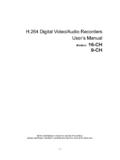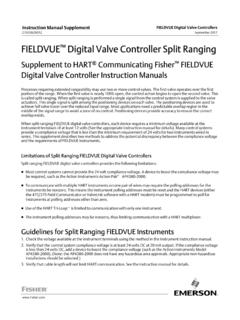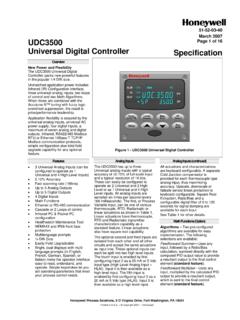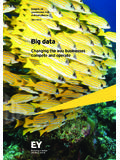Transcription of Directions for Obtaining FCC Licenses to Operate a …
1 Directions for Obtaining FCC Licenses to Operate a Marine Radio Background For voice and/or data transmission on marine MF/HF (SSB) radio frequencies, and VHF frequencies if communicating with international stations, the following Licenses are required. Required (for marine SSB and international VHF operation): 1. Restricted Radiotelephone Operator Permit (RR) permits an individual to communicate on marine MF/HF (SSB) and internationally on marine VHF frequencies. 2. Radio Station license , Ship Recreational or Voluntarily Equipped (SA) Licenses the operation of a shipboard radio on marine MF/HF (SSB) and internationally on marine VHF frequencies. The operator must be, or be supervised by, an individual with a Restricted Radiotelephone Operator Permit. For voice and/or data communications on amateur radio frequencies (in addition to, or instead of marine frequencies), the following license is required: 3. Amateur Radio license (HA), General Class permits an individual to Operate on amateur radio frequencies, including VHF and HF bands (note that a Technician Class license does not permit HF operation).
2 Please be sure to study our Marine Radio Licensing Questions & Answers page for helpful information about radio licensing and operating requirements. Data Services The following is a summary of the most popular data services offered for medium- and high-frequency (MF and HF) radio operation: SailMail Network of stations operating on marine SSB frequencies within the MF and HF bands. As a commercial operation, users are permitted to conduct business on this service. Connect time is restricted to 90 minutes per week. Except for weather data from certain services, file attachments are not permitted. Winlink 2000 Network of stations operating on Amateur Radio frequencies in the MF and HF bands. Use of this service requires a General Class Amateur Radio license . Due to amateur radio operating regulations, this service may not be used to conduct business. An example of "business" would be any business-related communication with your workplace. Personal 'business,' such as arranging to obtain a spare part for your private vessel, is permitted when alternate means of communication (such as satellite telephone) are not available.
3 Connect time is restricted to 30 minutes per day. File attachments are permitted. Obtaining Marine Radio Licenses This information has been compiled by The Offshore Store as a guideline to Obtaining a Federal Communications Commission (FCC) license for an individual who wishes to Operate a Single Side-Band (SSB) radio aboard a private pleasure craft. While several content-specific URLs are given within this document, a useful general URL is ASSUMPTIONS We've made the following assumptions in preparing these Directions : You are a citizen of the United States of America You have not formerly obtained an FCC Registration Number (FRN) You are filing as an individual (not a business) You presently have no FCC Licenses Your vessel will be used for pleasure You will be filing for a license via the Internet If any of these assumptions is not true for you, then at least one of the following steps will need to be modified accordingly. ServiceChargesLicense(s)CoverageMaximum UsageAttachments PermittedBusiness PermittedSailMail$250/yearRR, SAWorldwide90 weather (GRIB) filesYesWinlink 2000 FreeHAWorldwide30 NEEDED In order to complete this procedure, the following information will be requested by the FCC: Name Social Security Number Address Telephone Number Yacht Name Yacht Documentation Number MMSI Number (for Digital Selective Calling), if formerly assigned by the FCC* Credit Card Account and Expiration Date (for online payment) *If your MMSI number was assigned by a party other than the FCC ( BoatUS, SeaTow Service, or MariTEL), then you will need to have a new number issued.
4 If requested at the same time as the FCC license , there will be no additional charge for the new MMSI number. Disclaimer While we've tried to simplify the process by providing detailed step-by-step Directions , you should be aware that the FCC occasionally makes changes to their online forms, so some deviation may be encountered. We would appreciate being informed of any such deviations in order to keep this document current for the benefit of future users. This information is provided as a convenience to our customers. The user is solely responsible for determining the suitability and accuracy of all information provided to the FCC. It is strongly recommended that the user familiarize himself with the current FCC Rules and Regulations ( ) pertaining to his application. Furthermore, a good source for answers to general questions may be found at Step A. Register with CORES Before you can file an application online, you must register for an FCC Registration Number (FRN) from the FCC's Commission Registration System (CORES).
5 If you already have an FRN, then you may skip this step. your web browser to the "Register and Receive Your FRN" option. the "An Individual" option, and indicate if your contact address is within the United States, then press the [Continue] button. the Register A Domestic Individual registration form, then press the [Submit] button. You will immediately be given an FCC Registration Number (FRN), which you should record for future reference. Step B. Apply for Restricted Radiotelephone Operator Permit the Universal license System (ULS) by directing your browser to (or select the "ULS Online Filing" option if you've continued directly from Step A, above). your FCC Registration Number (FRN), then enter the Password you selected in Step A. the [Submit] button. "Apply for a New license " from the menu on the left-hand side of the page. the "RR Restricted Radiotelephone Operator Permit" service from the list. the [Continue] button, then complete the Licensee Information Type (Individual), Individual Name, Address.
6 For Employment in the United States? Yes (unless you aren't) the [Continue] button, and review the application Summary (note fee). "I certify that all the above statements are true." the application by entering your Name and Title, then press the [Submit] button. 'll be presented with a File Number, then select [Continue] to access the Payment Options. Step C. Pay Licensing Fee Electronic Form 159 by entering your FRN, Password, and Credit Card details (type, account number no hyphens or spaces and expiration date. the [Submit Payment] button to complete the credit card transaction. After making the payment ($60 at the time of this writing), you will be issued a permanent license number. This license has no expiration, as it is issued for the lifetime of the licensee. Copyright 2009 The Offshore Store PO Box 9480 Seattle, WA 98109 USA Phone +1-206-632-3025 FAX +1-206-632-0971 Step D. Apply for Ship's Radio Station license the Universal license System (ULS) by directing your browser to your FCC Registration Number (FRN), then enter the Password you selected in Step A.)
7 The [Submit] button. "Apply for a New license " from the menu on the left-hand side of the page. the "SA or SB - Ship" service from the list. the ship already been assigned a 4-letter call sign by the FCC? No (unless it has!) you required by law or treaty to carry a radio on your vessel? No your vessel travel to foreign ports? Yes you use marine radio equipment on board your vessel other than marine VHF radios, EPIRBs, and radar? Yes the [Continue] button, then select "Regular" from the list for the Request Type. the applicant exempt from FCC application fees? No the applicant exempt from FCC regulatory fees? No the [Continue] button, then complete the Licensee Information Type (Individual), Individual Name, Address. the [Continue] button, then select Regular from the list for the Ship license Type. the [Continue] button, then select PL - Pleasure from the list for the General Class. a Specific Class from the list ( MTB - Motorboat, SLO - Sloop, VLR - Sailing Ship, YAT - Yacht).
8 The [Continue] button, then provide the Ship Name and Official Ship Number (if documented; don't include the "NO." prefix). the [Continue] button. the vessel make international voyages? Yes the vessel communicate with international stations? Yes the [Continue] button. Radiotelegraph NB-DP/DSC Equipment, choose DSC Equipment and Need New 9-digit MMSI. the [Continue] button, then complete the Search & Recovery Contact information (primary and alternative). Radio Information, enter your EPIRB (406 MHz) Code (15 characters), if applicable. VHF, MF and HF as the radio equipment installed aboard the vessel. the [Continue] button, then complete the Vessel Information Maximum number of persons, number of survival rafts and lifeboats. the [Continue] button, and review the application Summary (note fee). "I certify that all the above statements are true." the application by entering your Name and Title, then press the [Submit] button.
9 'll be presented with a File Number, then select [Continue] to access the Payment Options. Step E. Pay Licensing Fee Electronic Form 159 by entering your FRN, Password, and Credit Card details (type, account number no hyphens or spaces and expiration date. the [Submit Payment] button to complete the credit card transaction. After making the payment ($160 at the time of this writing), you will be issued a temporary call sign which you may use until your permanent call sign is provided (reportedly within 24 hours). If you register for a SailMail account using the temporary call sign, you may easily change the account to the permanent call sign when it is available. Because your SailMail e-mail address contains the call sign, it is probably best to wait until you have the permanent call sign before informing your contacts of your SailMail e-mail account. The Offshore Store 2001/06/05, Rev 2009/08/20)





